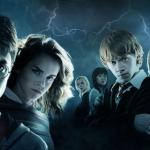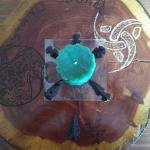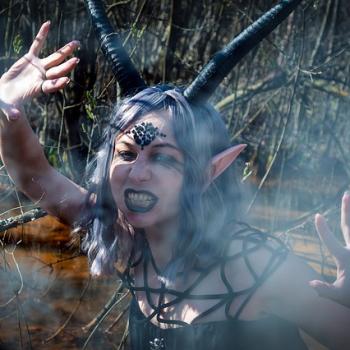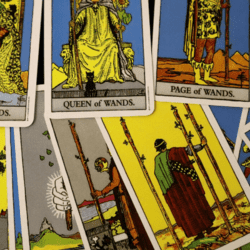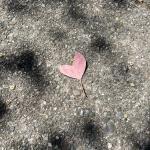There’s a lot of people who have questions about the Morrigan and I sometimes have people on social media either private message me or ask me on my Facebook page. I thought it might be helpful to do a blog post where I publicly answer popular questions about the Morrigan, so here you go. For even more answers see my book The Morrigan: Meeting the Great Queens, part of the Pagan Portals series.
Robert asks is there any truth to the idea that Danu is the Morrigan?
My answer – that idea is from a single reference in the Lebor Gabala Erenn (LGE). However it’s contradicted in multiple other places in the same text where it’s said that the Morrigan’s name is Anand (not Danand) -note that Anu and Danu would be the nominative forms of those names – and it’s also worth noting that we see the Morrigan and Danand together physically in one place in both the Cét-Cath Maige Tuired and Banshenchas. There’s a whole separate issue about who Danand actually is, but that’s tangential here. Personally I favor the idea that the reference to the Morrigan as Danand in the LGE is a scribal error and its should have read Anand, which is supported elsewhere in the LGE.
While it’s not definitively agreed on among scholars, there’s a pretty solid argument in my opinion that Anand and Danand are entirely separate beings. There names have different meanings, for one thing, and what little mythology we do have for each is mostly different.
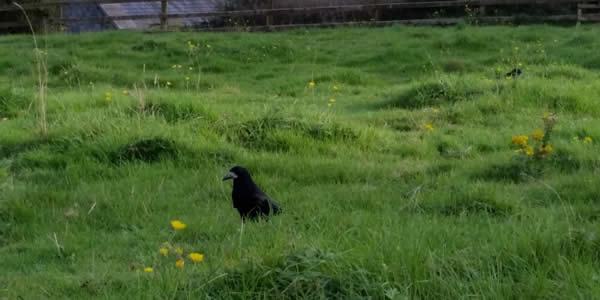
Marie asks – How has the Morrigan transformed over time? Related to that Caoimhin asks what activity we see related to her in post Iron-age Ireland?
My answer – in the oldest sources, written in the 9th century based on earlier material, the Morrigan is clearly a goddess and is referred to as a goddess in several places including the Metrical Dindshenchas. As we move deeper into the Christianized period we find her increasingly seen as a nighttime terror, a supernatural female who terrorizes. Whereas Brighid as a goddess became muddled with saint Brigid the Morrigan was too dangerous to be domesticated and was relegated instead to the wild ranks of Fairy and for the more cynical was viewed as a demon.
Kami asks – What names are conflated with the Morrigan?
My answer – The Morrigan’s true name, if she has one, is possibly Anand (Anu) although I will be clear that this is contested and our only source for it is references from the Lebor Gabala Erenn. Cormac’s Glossary tells us that the three Morrigans are Badb, the Morrigan, and Macha and indeed these three daughters of Ernmas appear acting together in mythology in several places. Badb and Macha are also called ‘Morrigan’ in some sources. These three are the main deities who can with certainty be said to be ‘the Morrigans’.
Much later authors in the 19th century also conflated several other goddess with the Morrigan, often based on those goddesses own connections to war and battle and sometimes through their appearing and acting with either Badb or the Morrigan in myths. These include Nemain and Fea in particular. Lady Gregory also suggested that there was local folklore in Ireland connecting Áine to the Morrigan although she is the only source for this idea. And of course there is the possible link between the Morrigan and Danand (Danu) based on the single reference in the Lebor Gabala Erenn.
Also Kami – Is the Morrigan a horse goddess or a cow goddess?
My answer – The Morrigan is associated with cows in several different stories, particularly with cows through the concept of cattle raids which was the main form of warfare in iron age Ireland. She takes the form of a hornless heifer in the Tain Bo Cuialigne, appears in the Tain Bo Regamna with a cow she’s stolen from the Sid of Cruachan and taken to be bred in Ulster, and in the story of Odras she steals a herd of cattle from the eponymous Odras. Cows were highly significant animals who represented wealth and social status.
The Morrigan is not associated with horses, however Macha is through her possession of the Liath Macha, a horse that would later pull Cu Chulainn’s chariot, and through her racing the king of Ulster’s horses.
Gwen asks – What underlies the idea of the Morrigan as a sex or fertility goddess?
My answer – That’s a complicated one. There’s no direct evidence of the Morrigan having either of these roles in the mythology. She has sex once in one story with a deity who is referred to as her husband so that hardly fits any definition of a goddess of sex. She has no connections to pregnancy or childbirth or agriculturally to crops or the reproduction of herds (except through stealing cows). However many modern devotees suggest that she does fit these roles as an empowered female force who is in total control of her sexuality and as a goddess of death who would therefore also control the other end of the spectrum and influence rebirth and birth.
Personally I don’t see her as a sex goddess myself, as to me a sex goddess would be a goddess who has sex, sexual pleasure, or procreation as her main purviews; or at the very least is known to have a lot of sexual interactions in her mythology. I just don’t see that with the Morrigan. If I were going to nominate any Irish deity as ‘sex deity’ it would be the Dagda who does have a stronger mythic connection to sexual relations and procreation.
Several people – Is the Morrigan a triple goddess?
My answer – In the modern neo-pagan sense of a maiden-mother-crone goddess no. In the older sense of a deity who appeared with two other deities then yes as we often see the Morrigan acting with two others, usually her two sisters Badb and Macha. When we see triple deities in Irish myth they are usually age equals and often siblings who either share a main purview or act together to accomplish a goal, so by that measure the Morrigan, Badb, and Macha would qualify.
Morrigan asks – Is the Morrigan associated with the Underworld?
My answer – This is a tricky one. The Irish don’t have a concept of an Underworld in quite the same way that we might picture it, so on the surface no she isn’t a goddess of the resting place of the dead. However like all the Tuatha De Danann she does reside in the Otherworld and does have a fairy mound, a sidhe, that she claims. She is associated with Uaimh na gCat, the cave of cats, which is sometimes called ‘Ireland’s Hellmouth’ and she certainly does have cthonic associations in the most literal sense because of this.
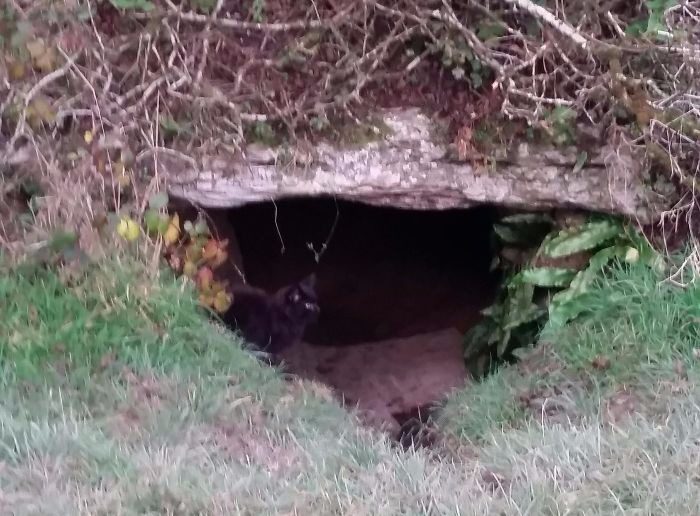
Chelly asks – Why do some people fear the Morrigan so much?
My answer – The Morrigan’s main purviews are war, battle, and death. She was also subject, as was previously mentioned, to a literary shift that took her from a goddess to a spectral figure that was in some cases outright called demonic. I suspect that it is for these reason that modern pagans for a long time tended to fear and actively avoid the Morrigan. This has eased a bit in recent years and there is a more balanced view of her in some places now, although we do need to be careful not to go too far in the other direction by trying to see her as entirely safe or overemphasize her associations with things outside battle for our own comfort. She is a complex deity and should be appreciated as such.
Sarah asks – Why do we focus on the Morrigan as a war goddess and not on her other aspects?
My answer -Well, her mythology does tend to emphasize her roles in battle and in inciting battles. Some people tend to see only this when they look at her, or this and the related connections to death and success in war. These are certainly not her only purviews and we know she was also a goddess of prophecy, for example, and who had connections to sovereignty and magic. Like all deities she really can’t be narrowly defined as a Goddess of (whatever) but it’s better to say that there are some things she’s more well known for being associated with and other things she’s not particularly associated with. Since war is one of her main associations that gets a lot of attention.
Also Sarah – What is the Morrigan’s genealogy?
My answer – According to mythology the Morrigan is the daughter of Ernmas and Delbeath; she has at least five sisters, Eriu, Fotla, Banba, Badb, and Macha. She may also have another sister in Anand (if that isn’t the Morrigan’s actual name) because some versions of the Lebor Gabala Erenn instead of saying ‘the Morrigan, that is Anand’ say ‘the Morrigan and Anand’. The reason for this confusion has to do with the shorthand scribes used in the texts where the symbol for ‘that is’ was i and the symbol for ‘and’ was 7 and the two when written could look similiar.
Her husband is the Dagda. She has a daughter Adair and one son Meiche that we know of and possible three other sons Glon, Gaim, and Coscar (if it’s true that her name is actually Anand). Her two nieces are Fea and Nemain.
Contrary to what floats around online sometimes, the Morrigan is one the Tuatha De Danann, she is counted among their number in the sources and acts on their behalf consistently.
Still Sarah – Why do people visualize her as young and sexy?
My answer – she’s a shapeshifter and appears in mythology as both a young maiden [ingen and ben óg] and a very old woman [cailleach and senntaine]. Her most consistent description is simply as a woman [ben] with no age specified and no detailed description. As to why modern people choose to view her as young, winsome, sexy and all that I honestly don’t know. I might theorize that it’s because that view fits into wider societal norms of beauty, or perhaps that it makes a fearsome goddess of battle and prophecy seem safer and more approachable, but I’d only be guessing. It’s not an aesthetic I vibe with myself as I have always visualized her as strong and powerful and I find most modern depictions of her just don’t say that to me.
Edmund asks – What are the biggest misunderstandings about the Morrigan?
My answer – It would be hard to judge what qualify as the biggest. I’d say the most common ones I see that haven’t already been discussed here would include her relationship to the Dagda and her feelings about Cu Chulainn. I’ve seen a lot of people suggesting that she isn’t married or that her meeting with the Dagda at Samhain in the Cath Maige Tuired is by chance, and the source material is actually pretty clear that they were a married couple and that the meeting was pre-arranged and a regular thing. I also see a lot of people saying she was in love with Cu Chulainn and then tried to punish him for rejecting her, but again we just don’t see that in the mythology.
There’s one vignette in the Tain Bo Cuialigne where the Morrigan appears to Cu Chulainn in disguise as a king’s daughter and tries to seduce him, but there’s no evidence that her intentions were genuine; in fact there’s good indications I think that she was either testing him or trying to deceive him into leaving his post at the river ford. Her proclamation of love in this incident is not any more genuine than her telling him she is ‘King Buan’s daughter’, and her promising him that she will attack him is a result of their conversation rather than his specific refusal of her love.
Brendan asks – What do you think is the best way to respond to people who say they follow the Morrigan but their actions show that their ‘following’ amounts to a glorification of violence, firearms possession, and war fighting?
My answer – Different people will have their own views on this. My response to people who seem to be following the Morrigan as an excuse to glorify war and violence is the same as my response to people who try to argue that she is actually a peaceful earth goddess co-opted by the patriarchy: I gently disagree with the viewpoint, try to discuss the known mythology, and ultimately feel that it is between them and Herself to sort out.
Etain asks – Are there any similarities between the Morrigan and the Cailleach?
My answer – Perhaps in the broad strokes, but for the most part they are very different deities with different mythology and different roots. The Morrigan is one the Tuatha De Danann; the Cailleach is not as far as we know for certain. The Morrigan’s physical locations and stories tend to be located in central and northwestern Ireland; the Cailleach’s are in the southwest, for the most part (Sliabh na Caillí being one exception). Similarities, well, both can appear as young or old, both are associated with cattle, and both are fearsome goddesses.
Several people wanted to know about the Morrigan’s preferences relating to offerings, colors, actions by devotees. We don’t have anything in mythology or folklore about those things so any answers here would be either speculation or my own personal gnosis. I’d probably say her favorite color is red, and for offerings I always recommend whiskey, milk, blood, or bread, but with her the real point is the effort that goes into it. She also seems to appreciate intangible offerings done in her name if they include actions that fall in line with her purviews – or poetry seems to go over well.
Several people asked about ways to connect to the Morrigan and that’s really too long to get into in this post but I’ve written about it before here
Several people asked about resources and original texts that the Morrigan appears in. I’ve written about online resources previously here. Original texts can be found at Mary Jones Celtic Literature Collective and would include: Lebor Gabala Erenn, Cét-Cath Maige Tuired, Cath Maige Tuired, Banshenchas, Dindshenchas, The Destruction of Da Derga’s Hostel, Noínden Ulad, The Boyhood Deeds of Cu Chulainn, The Wooing of Emer, Tain Bo Regamna, Tain Bo Cuiligne, Bricriu’s Feast, Wooing of Ferb, the Death of Cu Chulainn, and the Cath Maig Roth.


